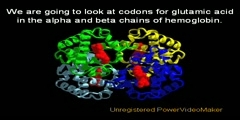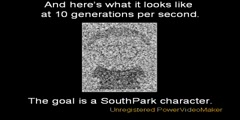Evolution Evidence , Part III
WHAT IF INSERTION IS NOT RANDOM If you run the numbers with the assumption that ERVs can only insert in 1% of the genome, i.e. highly nonrandom, you still get enormously low probabilities with only 16 ERVs. So even if insertion is highly nonrandom, getting the thousands of matched ERVs between all primates is unbelievably unlikely just like I show in the video (don't believe me, do the math). Endogenous Retroviruses (ERVs) are the relics of ancient viral infections preserved in our DNA. The odd thing is many ERVs are located in exactly the same position on our genome and the chimpanzee genome. There are two explanations for the perfectly matched ERV locations. Either it is an unbelievable coincidence that viruses just by chance inserted in exactly the same location in our genomes, or humans and chimps share a common ancestor. It was our common ancestor that was infected, and we both inherited the ERVs. ERVs providence the closest thing to a mathematical proof for evolution. And remember, ERVs are just one of the millions of FACTS that support the theory of evolution. Think about it. To download this video please go to: http://www.mediafire.com/?4oubmomm34g If you wish to translate this video you can download the PowerPoint file from: http://www.mediafire.com/?tnzy2ynjymy ERV positions taken from: C. M. Romano, R. F. Ramalho, and P. M. de A. Zanotto; Tempo and mode of ERV-K evolution in human and chimpanzee genomes. Arch Virol (2006) 151: 22152228 Probabilities calculates using random insertion into a genome containing 3 billion bases. Yes, some ERVs have shown to not insert perfectly randomly, but none show perfect site selection. Accounting for non-random insertion would NOT reduce the probabilities much.
Channels:
Tags: Evolution Creation Intelligent Design DNA Human Chimp Genome Chromosome Endogenous Retrovirus ERV Probability Virus
Uploaded by: watchme ( Send Message ) on 27-05-2009.
Duration: 0m 0s














